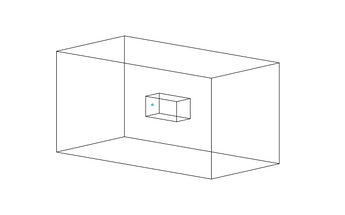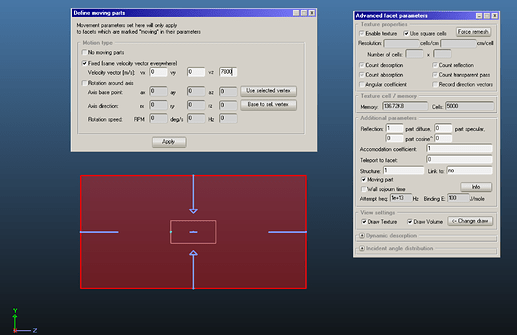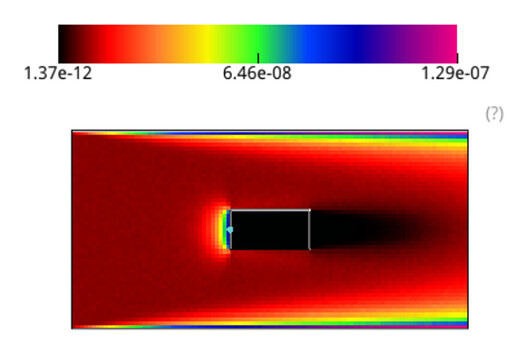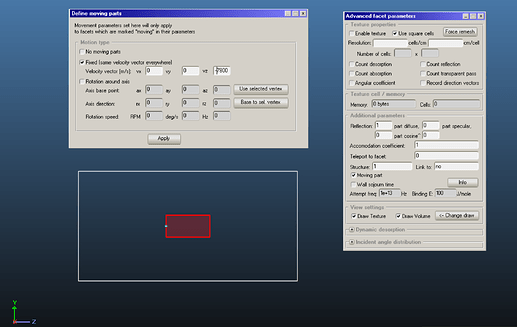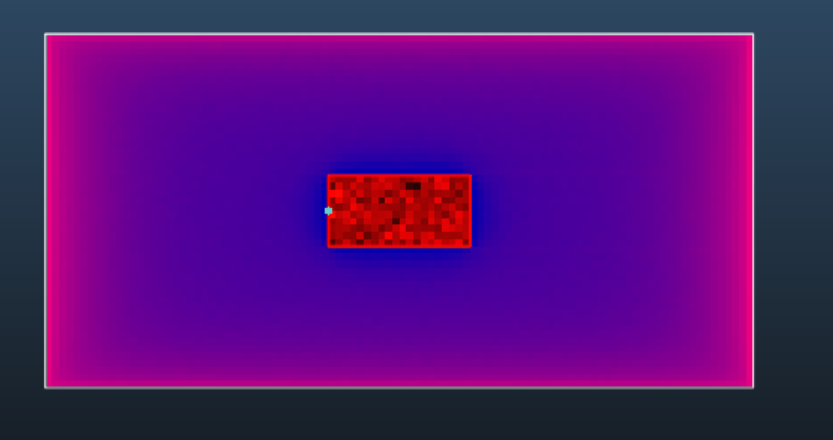Hello marton,
I want to simulate the molecular impact force on the windward surface of a spacecraft in orbit. Below is my model.
The small rectangular box represents the spacecraft, and the larger one represents space.
Theoretically, both configurations—setting the surrounding space in motion while keeping the spacecraft stationary or setting the spacecraft in motion while keeping the surrounding space stationary—should achieve my goal.
However, the force obtained from these two setups differs significantly, and the results from the second setup are clearly inconsistent with reality.
- Surrounding space is moving part, spacecraft stationary
As shown in the figure, I set vz = 7800 m/s and defined space as a moving part .
The force on the windward surface (left side of the small rectangular box) is 1.045e-4 N.
The pressure distribution in space is as follows, which aligns with my intuitive expectations:
- Spacecraft is moving part, surrounding space stationary
As shown in the figure, I set vz = -7800 m/s and defined the spacecraft as a moving part .
In this case, the force on the windward surface is 4.5e-5 N. The pressure distribution in space is shown in the figure. Surprisingly, there is pressure inside the small rectangular space, which seems unreasonable.
Even more problematic, when I tested by setting vz = -78000 m/s (spacecraft as moving part, surrounding space stationary), the forces on the windward and leeward surfaces were almost identical!
![]()
Theoretically, I should set the spacecraft in motion while keeping the surrounding space stationary to achieve my goal. However, it seems that defining the moving part in Molflow this way leads to issues.
My Questions:
- Can I achieve my goal by setting the surrounding space be moving part while keeping the spacecraft stationary? Is the result of this setting reliable? Why?
- Is defining the spacecraft as a moving part currently unfeasible, and does it produce unreasonable results?
Attached is my model.
test.zip (253.8 KB)
